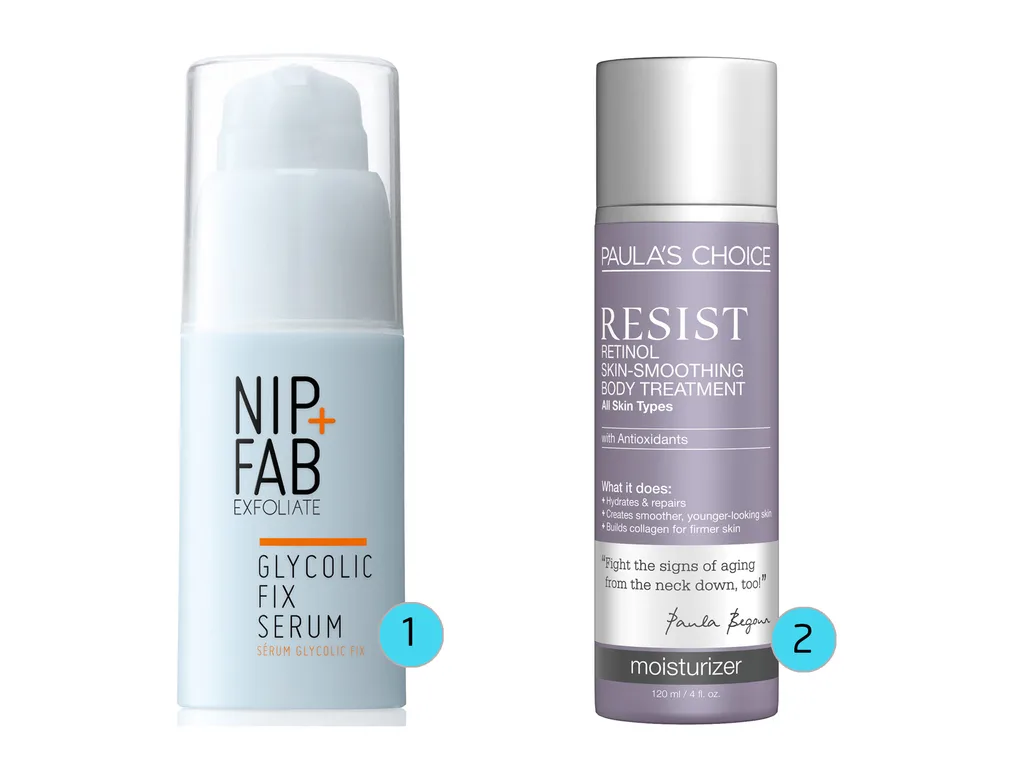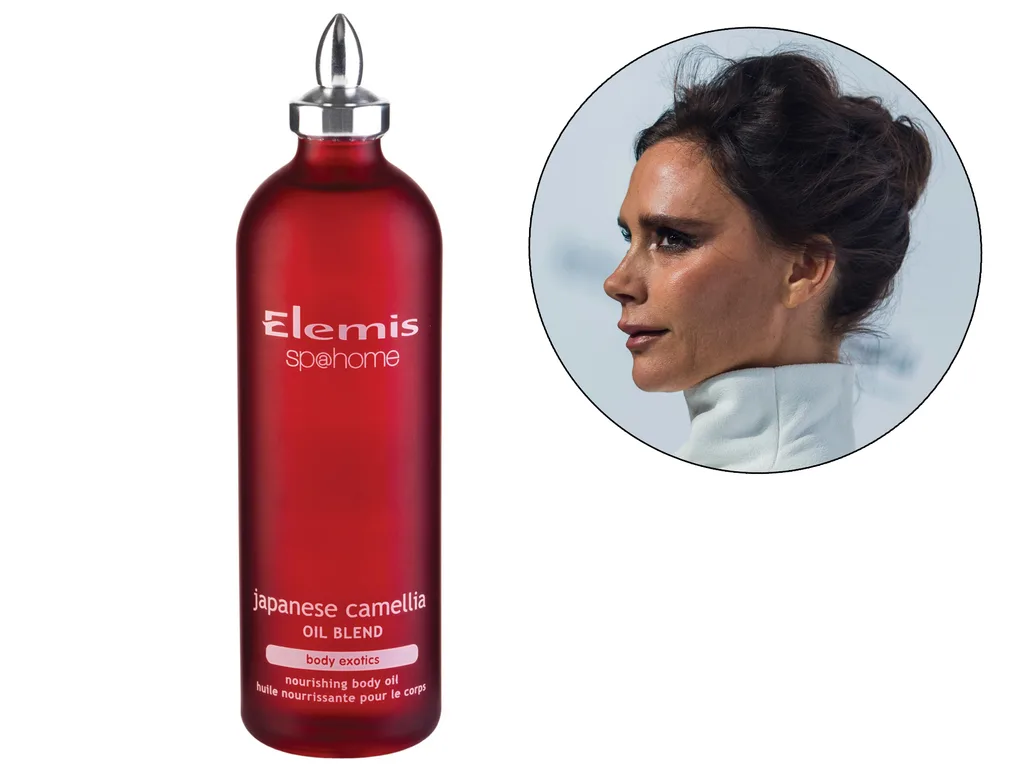Stretch marks are an unavoidable part of life for many people – not even celebs are safe! Puberty, pregnancy, weight gain and hormonal changes can all cause striae gravidarum – as they’re medically known – and treating them is a tricky task.
Unfortunately removing or healing stretch marks completely can’t be done (sorry), as they’re actually tears in the lower layers of the skin which cause blood vessels to show through. Over time, the lines will fade from pink when new to a pearly white, so become less visible naturally.
However if they bother you (and that’s no doubt why you’re here), there are a number of things you can do right now to help minimise their appearance.
Topical treatments and vitamins
RETINOL AND GLYCOLIC ACID
Retinol (also known as vitamin A) works on new stretch marks by resurfacing the skin, encouraging cell turn over and stimulating collagen production in the lower skin layers, creating a plumped-up effect that can smooth the lines.
However retinol is not effective on stretch marks that have already turned white, and should not be used when pregnant as the excessive intake of vitamin A may cause birth deformities.
Glycolic acid is another chemical exfoliator that can reduce the appearance of existing stretch marks by removing dead layers of skin to give the illusion of more even skin tone.

TRY: 1. Nip + Fab Glycolic Fix Serum, $32.95, nipandfab.com.au; 2. Paula’s Choice Resist Retinol Skin-Smoothing Body Treatment, $42, paulaschoice.com.au.
VITAMIN E CREAM, COCOA AND SHEA BUTTER
While there’s no scientific proof any of these treat stretch marks, plenty of online reviews will claim otherwise. However, these moisturisers contain fatty acids and are rich emollients so their effectiveness may lie in the fact they hydrate the skin making the lines less noticable.
Moisturised and supple skin is vital to its elasticity, which in turn can help the skin better adapt to pregnancy or weight gain. In other words, using these types of products will help prevent stretch marks but they will not help treat them.
ZINC
Zinc is a mineral connected to the repair and regeneration of cells. A zinc deficiency can make you more prone to getting stretch marks. Boost your intake with oysters and venison, both rich sources of the mineral, or take a supplement.
Celebrity favourites
CHRISSY TEIGEN
New mum Chrissy swears by luxe-fave La Mer The Concentrate to prevent post-pregnancy lines. The lightweight formula contains antioxidant-rich lime tea extract to reduce redness and irritation in the skin. “I lather this stuff on. It is no joke,” she said of the brand’s cult lotion. “I wanted to make sure I did it because I am a stretch-mark girl, so I knew that I would get it pretty badly… So every single day— it’s about 15 to 20 minutes of my day — I sit and just rub this La Mer [on me].”

La Mer The Concentrate, $520 for 30ml, cremedelamer.com.au
VICTORIA BECKHAM
The former Spice Girl declared her love for Elemis body oil on Twitter during her pregnancy with Harper. Formulated to prevent stretch marks thanks to its plant collagen, this oil leaves a subtle glow on the skin and may help improve elasticity.

Elemis frangipani Monoi Body Oil, $69, elemisaustralia.com.au
MIRANDA KERR
The natural beauty lover credited her stretch-mark-free skin to diligent use of Kora Organics rosehip oil (from her own line) throughout her pregnancy with son Flynn. “It’s really nourishing and full of antioxidants and essential fatty acids,” Miranda told Into The Gloss, adding: “I had a ten-pound baby!”

KORA Organics Luxurious Rosehip Oil, $49.95, koraorganics.com
Professional treatments
MICRODERMABRASION
This type of treatment involves a hand-held device that blows crystals onto skin. These crystals gently remove a fine layer of skin, promoting the growth of new, more-elastic skin. Stretch marks can also be encouraged to heal through this process of exfoliation.
Dr Joseph Ajaka from Sydney’s Cosmos Clinic specialises in treating stretch marks, and although he says there is “no way of completely curing it” there are a series of invasive and non-invasive treatment options that will “make it look better”.
NON-INVASIVE TREATMENTS
This includes Platelet Rich Plasma (PRP), where your blood is drawn and mixed in a machine with growth factors. The PRP mixture is then injected back into the affected area, to start the healing process. PRP is important for cell regeneration. As kids, our bodies contain a high concentration of growth factors which diminish over time. “We are taking your blood and bringing it back to the concentrations you had when you were a child,” Dr Ajaka explains.
The area is then treated with either skin needling, which is a small roller tool with thousands of tiny needle-like points which causes injury to the skin and creates collagen production, or is zapped with a Fractional Laser.
The additional benefit of Fractional Laser is it creates heat under the skin, leading to further collagen contraction, pulling lines the back together. “The best non-surgical option is to use a combination of Fractional Laser and PRP,” says Dr Ajaka. “What we are trying to do with this treatment is remodel the collagen and get it to form new, better collagen.”
Your skin colour and expected recovery time play a part in determining which treatment is right for you. For example at Cosmos Clinic treating darker skin tones with the laser is not recommended as it could cause permanent pigmentation.
MORE INVASIVE OPTION
Vaser Skin Tightening is a procedure where a small incision is made in the affected area and a laser is inserted under the skin. This laser generates heat, ultimately stimulating the production of collagen. Because this is done under the layers of skin right where treatment is needed, a lower temperature can be used so there’s less risk of damage.
Dr Ajaka recommends waiting three to six months after pregnancy for any treatment, because the skin needs time to retract and restructure. This way any treatment will also be most effective.
Ultimately he says the only way to get rid of stretch marks for good is to surgically remove the damaged skin completely.



